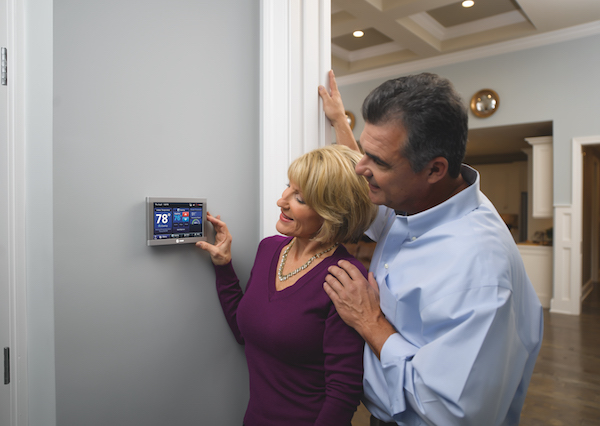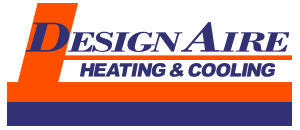
While you might think that turning on your AC unit after using your heating system for some time is easy, it’s possible that your air conditioning unit might not function like it should right away. In order to make sure it works right the first time it is turned on, and keeps running long into the hot summer months, follow these steps to ensure a well-functioning air conditioning experience for months to come!
How to Turn On Your AC Unit After Winter
Step 1: Inspect Your Outdoor Condenser Unit
First, make sure your outdoor unit is ready for rigorous use for the next few months. The best way to do this is to make sure you have removed any covers you might have put on the condenser unit to protect it from the elements during the winter season. Then, clear off any blockages such as dead leaves, dirt, and twigs that might be obstructing your unit from functioning optimally. You might do this with a hose using a nozzle and spraying at a 45 degree angle to loosen and remove debris, and after that, manually remove debris by hand that the hose did not rinse away.
Failing to clear off debris around the condenser and coils might lead the AC unit’s interior components being blocked, which might not let it work the way it needs to when the temperature outside increases.
Step 2: Change the AC Unit Air Filter
Next, you must change the air filter on the AC unit inside once you’ve cleaned off the condenser unit outdoors. Use a pleated filter, as they are designed this way to increase the surface area necessary to filter the air and catch more particles than air filters without pleats.
In addition to being necessary to running your air conditioner, it is essential you continue to change the air filter throughout the season. Typically, you should aim to continue replacing the filter every 1-3 months, depending on your usage. Higher usage of the AC unit should mean more frequent air filter changes, so monitor how often it runs as best you can, as well as your energy costs to determine if the unit is running efficiency or you need to replace your air conditioner. Also, ensure that your filter is the right size for the unit and does not have any gaps that might let air through before being filtered.
Step 3: Turn on Air Conditioning System
Then, once you have changed out the air filter and cleaned the exterior condenser unit, you should turn on the AC unit! First, check the circuits to ensure they are receiving power. Second, switch the thermostat to “cool” and the fan to “auto.” Finally, lower the temperature on the thermostat at or below the outside temperature so that the unit functions properly.
If the thermostat isn’t set low enough (e.g. the temperature it is set to is above the outdoor temperature), there is a good chance it will not turn on like it should. Most professionals recommend turning the unit to about 68 degrees Fahrenheit to test if the system is working. If the temperature outside is below that, however, you might be premature in preparing your AC unit for summer, as that indoor air temperature is usually fairly tolerable for most homeowners as the seasons change. You might want to wait until it gets warmer to start getting your AC ready!
Step 4: Check and Listen to Outdoor Unit for Functionality
After you have turn on the AC unit inside, take a trip outside and have a listen. The fan should be spinning and the compressor of the condenser unit should be making a humming sound. Put your hand above the unit to check that warm air is coming out. If it is, good news! The warm air from your home is exiting and cool air is being pulled in.
It might take a few minutes for the air leaving the vents inside of the home to be a cooler temperature, but once you feel it, you’ll know your air conditioning unit is working the way it should. You should start to feel the air cool in 10-15 minutes from the time you switch the AC unit to “on.”
Throughout the day, check the indoor air vents for cool air and the outdoor unit for warm air to ensure it continues to work well. If issues arise, turn of the system immediately! You will do more damage to your unit if you leave it running than if you shut it off and address the problem.
Common Air Conditioning Problems
Some problems to watch for include:
- Unusual sounds coming from the unit
- Warm air coming from the vents (e.g., temperature will not cool below 75 degrees)
- Fan fails to spin
- AC unit runs all of the time and rarely shuts off
- Frozen pipes, signaling problems such as improper air flow, low refrigerant, or improper drainage
If you have turned on your air conditioner and experienced these problems, have a technician come right away to inspect the unit! An HVAC professional will recognize the signs of a unit that needs maintenance or replacement and can provide you a workable solution. At minimum, you should at least have a technician inspect the unit once per year to ensure it’s working.
If, after confirming the AC unit works well you notice high energy bills, it might be time to replace the unit! An HVAC company such as Design Aire can help!
Contact Our St. Louis Air Conditioning Air Conditioning Maintenance Technicians
With over 100 years serving customers in the St. Louis area, Design Aire is here to provide air conditioning maintenance, repairs, and installations when you need them! Don’t sweat away the summer months worrying your AC unit won’t be reliable. Depend on our experts to help when the warmer season kicks off or anytime in an AC emergency situation. Contact us today to learn more about our AC services!

